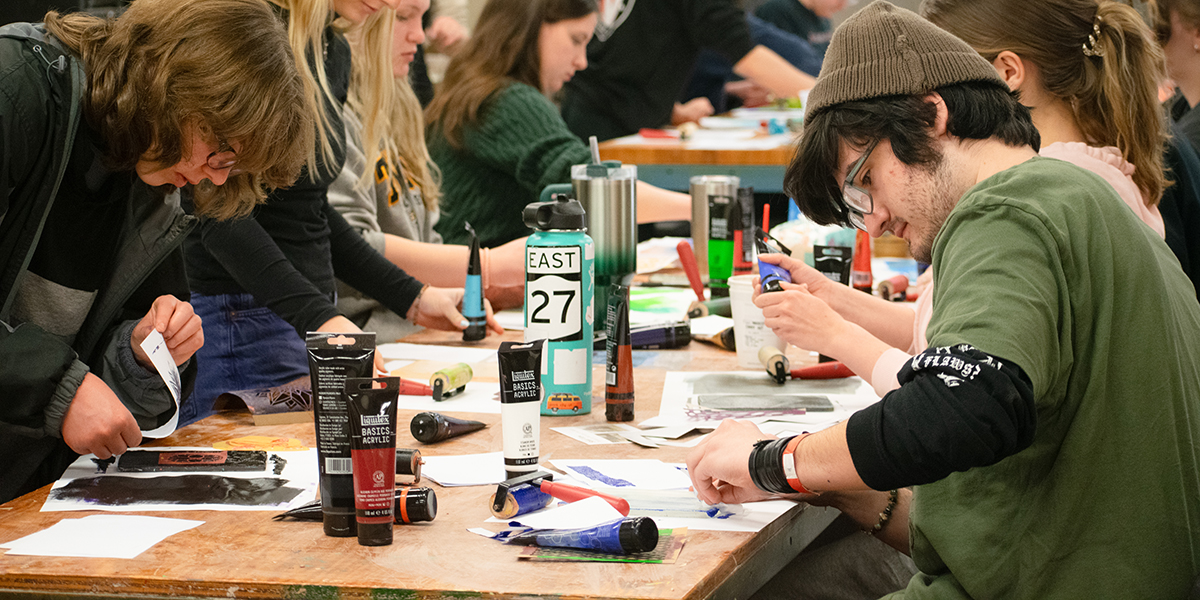
Wingspan, Fall 2024
Imagine a world where chemistry is learned through painting, history comes alive through theatre and math unfolds with the elegance of origami. At AACC, the boundaries between subjects are shattering as arts integration cultivates a new generation of creative thinkers.
Arts integration uses visual and other arts to deepen learning by engaging students’ senses and fostering personal connections with the material. By incorporating arts into subjects like math or anatomy, students engage more deeply and retain information more effectively through sensory experiences and hands-on learning.
"Art and design are integral to the human experience. The more we put it on the sidelines, the more we cheat ourselves out of a learning experience,” said Laura Pasquini, AACC’s Visual Arts program navigator.
Pasquini highlighted how arts integration can help students tackle complex ideas. For instance, Assistant Professor Amy Carattini's anthropology class explored the idea of "home and belonging." Students created art prints, wrote personal reflections and used photos to express their thoughts. This project helped students connect deeply with the topic, leading to more meaningful and personal insights.
Blending the arts into subjects like math and engineering are challenging how STEM students work. In one project, STEM students used origami to understand complex mathematical concepts. By folding paper into intricate designs, they saw firsthand how art and STEM intersect. “What we're doing with arts integration is creating conductors who can think creatively, problem solve in nuanced ways, and who can also use empathy in their problem solving,” Pasquini said.
Pasquini and Carattini will launch the Arts Integration Hub’s pilot year as a project to engage learners through hands-on practices using art as a tool for learning. The hub will serve students and faculty at AACC, with a special focus on engaging AACPS education specialists to collaborate on curriculum development.
“Arts integration transforms conventional learning into a dynamic, engaging process that cultivates deeper insights into our collective knowledge and our navigation of diverse human perspectives,” Carattini said.
Pasquini emphasizes that creativity and design are crucial in all fields, especially as we enter an increasingly complex future. “We have to help people who are nonartists realize that creativity is a part of all disciplines.” Whether you're into science, math or the arts, integrating art into your studies can help you discover new ways to learn, think and succeed.